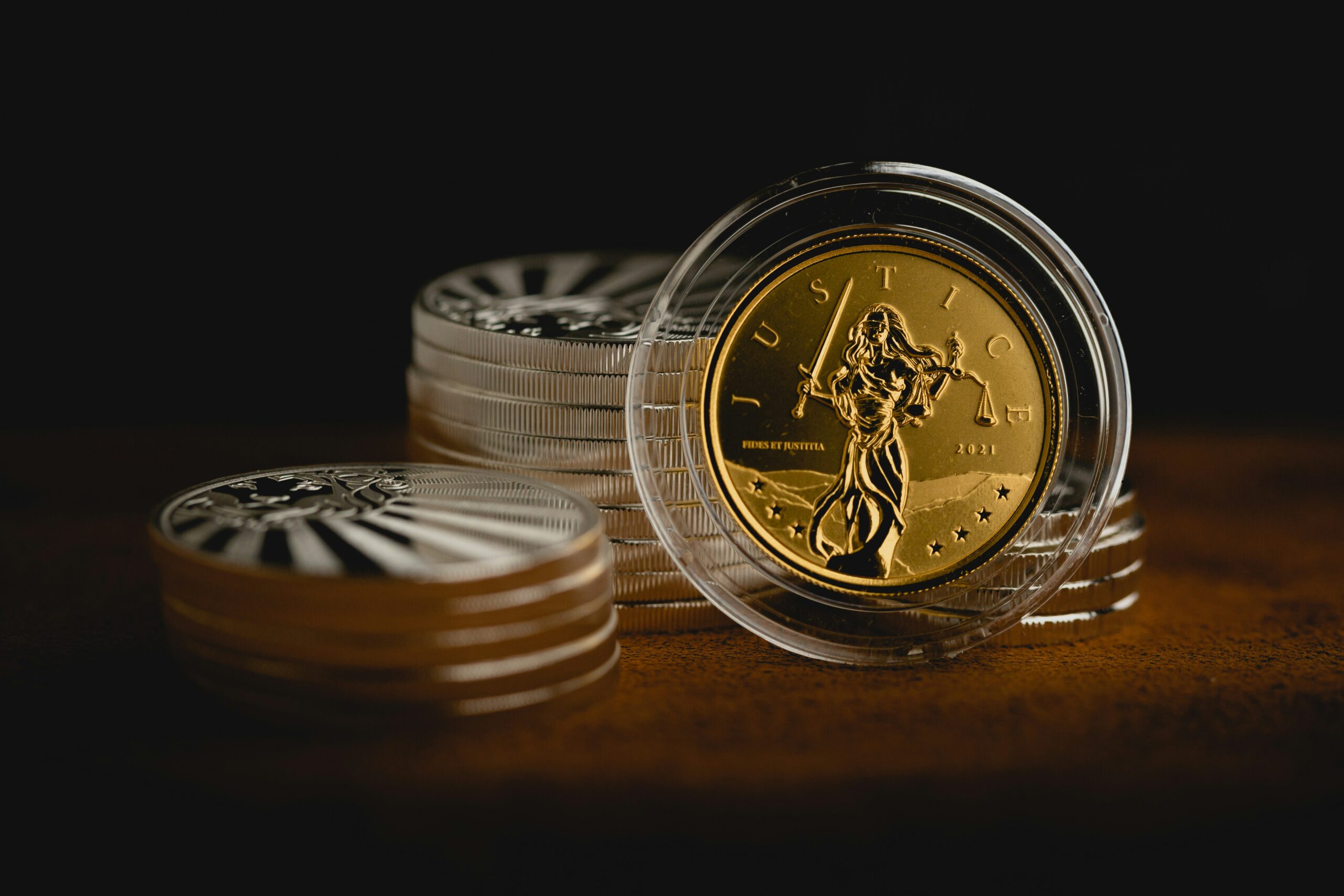When it comes to investing in precious metals, silver and gold have always been the ultimate contenders. Both hold immense historical, cultural, and financial significance. From temples to trading floors, from jewelry boxes to global stock exchanges silver and gold have symbolized wealth and stability for centuries.
But when you stand at the crossroads of investment which one should you choose: silver or gold?
Let’s explore this golden (and silvery) dilemma in depth.
1. Understanding the Basics: Gold vs Silver
Before diving into returns and ratios, it’s important to understand what differentiates gold from silver as investment assets.
- Gold is primarily a store of value. It’s rare, non-reactive, and universally accepted as a form of wealth preservation. Central banks hold it, investors hoard it, and cultures celebrate it.
- Silver, on the other hand, is both an industrial and precious metal. It’s used in jewelry, electronics, solar panels, and batteries. This dual nature makes silver more volatile but also more dynamic in terms of demand.
In simple terms:
👉 Gold = Stability & Wealth Preservation
👉 Silver = Affordability & Growth Potential
2. Price Volatility and Risk Level
One of the main differences between silver and gold is price volatility.
- Gold prices are relatively stable. Since gold is largely an investment and reserve asset, it doesn’t swing wildly with industrial demand or economic cycles.
- Silver prices, on the other hand, fluctuate more because silver is used in multiple industries. For example, during an industrial slowdown, silver demand can dip, causing prices to drop even if investment demand stays steady.
Investor Tip:
If you’re a conservative investor seeking stability, gold suits you better. If you can handle short-term fluctuations for potentially higher long-term gains, silver might be your metal.
3. Affordability and Entry Point
Gold is far more expensive than silver. As of late 2025, 1 gram of gold costs around ₹7,200, while 1 gram of silver costs around ₹170–₹180 in India.
This makes silver a perfect entry point for small or first-time investors. You can accumulate more units of silver for the same budget, which feels psychologically rewarding and allows for greater liquidity.
However, gold’s higher price also signals higher demand in global financial systems, making it more desirable for long-term wealth preservation.
Investor Tip:
Start with silver if you’re new to precious metals investing. Once you build capital and confidence, diversify into gold.
4. Storage, Liquidity, and Ease of Trade
Gold:
- Easy to store in the form of coins, bars, or jewelry.
- High liquidity easily sold at banks, jewelry shops, or bullion traders.
- Lower storage volume for the same value (a small gold coin may equal a large amount of silver in value).
Silver:
- Requires more storage space because it’s cheaper per gram but bulkier per value.
- Slightly less liquid in smaller towns or with non-specialized dealers.
- Tarnishes over time if not stored properly.
So, in terms of convenience, gold wins hands down. But if you’re investing digitally through ETFs or e-silver, storage isn’t a concern anymore.
5. Industrial Demand: The Silver Advantage
Silver has a unique strength that gold lacks industrial usage.
Over 50% of global silver demand comes from industries like:
- Solar energy (photovoltaics)
- Electronics and semiconductors
- Electric vehicles
- Medical equipment and antibacterial applications
As the world moves toward renewable energy and electrification, silver’s industrial demand is expected to soar.
Gold, meanwhile, has limited industrial use mostly in electronics and dentistry.
Investor Tip:
If you believe in the green energy and technology revolution, silver could outperform gold in the coming decade.
6. Historical Performance and Returns
Both metals have proven to be reliable wealth preservers over centuries. But their performance differs depending on market cycles.
- During inflationary or uncertain economic times, gold tends to outperform. Investors rush toward safety, and gold’s limited supply boosts prices.
- During periods of industrial growth or technological innovation, silver can surge dramatically.
For instance:
- In 2020, silver prices jumped over 50%, outperforming gold’s 25% rise.
- In 2023–2024, silver again showed higher percentage gains due to industrial demand and weaker dollar conditions.
In short:
Gold offers consistent, steady appreciation.
Silver offers higher potential returns but with higher risk.

7. Gold-Silver Ratio: A Key Indicator
The gold-silver ratio measures how many ounces of silver are needed to buy one ounce of gold. Historically, this ratio averages around 60:1, but it fluctuates widely.
- A high ratio (above 80) means silver is undervalued compared to gold.
- A low ratio (below 50) means silver is relatively expensive.
In 2025, the ratio is hovering around 75–80, suggesting silver may still have upside potential compared to gold.
Smart investors often use this ratio to switch between metals buying silver when the ratio is high and gold when it’s low.
8. Inflation and Safe-Haven Appeal
Both silver and gold are hedges against inflation and currency depreciation. When paper money loses value, people turn to precious metals as real assets.
However, gold has a stronger safe-haven appeal.
During geopolitical tensions, wars, or stock market crashes, gold demand spikes instantly. Silver also rises but often lags behind gold in crisis response.
So, if your main goal is to protect wealth from inflation or economic shocks, gold is the safer bet.
9. Taxation and Government Regulations
In India, both metals are treated as capital assets, meaning capital gains tax applies upon sale.
- If held for less than 3 years, short-term capital gains apply (added to your income and taxed at your slab rate).
- If held for more than 3 years, long-term capital gains tax applies (20% with indexation benefits).
There are no major regulatory restrictions on either metal, but gold imports face slightly higher duties than silver, which can affect pricing.
10. Future Outlook: Silver vs Gold in 2025 and Beyond
Gold Outlook (2025–2030):
- Stable demand from central banks, ETFs, and investors.
- Expected range: ₹70,000–₹85,000 per 10 grams in India by late 2026.
- Driven by inflation, geopolitical risk, and central bank purchases.
Silver Outlook (2025–2030):
- Strong industrial demand growth (solar, EV, batteries).
- Expected range: ₹1,80,000–₹2,00,000 per kg by 2026.
- Volatile but with potentially higher percentage returns.
Verdict:
Gold remains the go-to safe asset for preserving wealth.
Silver offers greater growth potential, especially as green technologies expand.
11. Building a Balanced Precious Metal Portfolio
Instead of choosing just one, the smartest approach is to balance your investments.
Example Allocation:
- 70% Gold – for stability, long-term security, and inflation protection.
- 30% Silver – for growth potential and industrial exposure.
You can invest in:
- Physical forms: coins, bars, jewelry
- Digital gold/silver: via platforms like Paytm, Groww, or MMTC-PAMP
- ETFs and mutual funds: offering liquidity and no storage hassle
This diversified approach helps cushion volatility while capturing potential upside from both metals.
Final Thoughts
When deciding between silver and gold, there’s no one-size-fits-all answer.
It depends on your goals, risk appetite, and investment horizon.
- Choose gold if you want long-term wealth stability and minimal risk.
- Choose silver if you’re looking for affordability, higher returns, and exposure to industrial growth.
- Choose both if you want the perfect mix of safety and opportunity.
In 2025 and beyond, both metals will continue shining but your strategy determines which one brightens your portfolio more.







